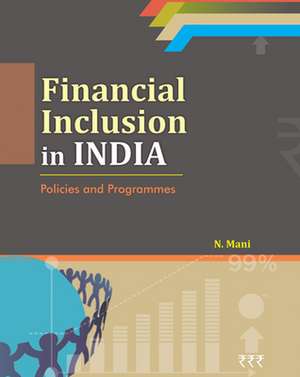Financial Inclusion in India: Policies & Programmes
Autor N. Manien Limba Engleză Hardback – aug 2015
Preț: 541.98 lei
Preț vechi: 609.12 lei
-11% Nou
Puncte Express: 813
Preț estimativ în valută:
103.71€ • 108.50$ • 86.15£
103.71€ • 108.50$ • 86.15£
Carte indisponibilă temporar
Doresc să fiu notificat când acest titlu va fi disponibil:
Se trimite...
Preluare comenzi: 021 569.72.76
Specificații
ISBN-13: 9788177084085
ISBN-10: 8177084089
Pagini: 312
Dimensiuni: 190 x 245 x 28 mm
Greutate: 0.93 kg
Editura: New Century Publications
Colecția New Century Publications (IND)
ISBN-10: 8177084089
Pagini: 312
Dimensiuni: 190 x 245 x 28 mm
Greutate: 0.93 kg
Editura: New Century Publications
Colecția New Century Publications (IND)
Cuprins
Indian Economy: An Overview; Poverty in India: Concept, Causes & Incidence; Financial System & Regulators in India; Financial Inclusion: Conceptual Framework; Recent Financial Inclusion Measures in India; Rural Credit Co-operatives; Regional Rural Banks (RRBs); Urban Co-operative Banks (UCBs); Micro Finance & Self-help Groups (SHGs); Mutual Funds; Pension Funds; Pradhan Mantri Jan-Dhan Yojana (PMJDY), 2014; Role of Technology in Financial Inclusion; Bibliography; Index.
